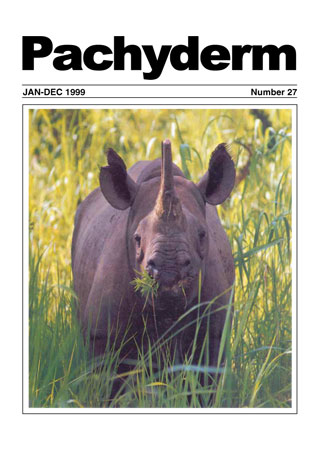Elephants and their woodland habitats in northern Botswana
DOI:
https://doi.org/10.69649/pachyderm.v27i1.981Abstract
The elephant population in northern Botswana (estimated to be some 80,000)is considered the largest remaining 'herd' in Africa. This paper looks at this population and its habitat in terms of its current status, the their food and water requirements, their keystone role in the ecology of the area, and management options. These animals maintain seasonal movements, congregating in the northern rivers and parts of the Okavango Delta during the dry season, and dispersing at the onset of the rains. Availability of surface water is a prime factor regulating the abundance of elephants, and restricting their movements particularly toward the end of the dry season. The spatial patterns of vegetation utilization are influenced by the extent of local elephant aggregations. The author notes his synopsis, based on 8 years of field work, 'will demonstate that while elephants have a significant role in the regulation of the natural processes in this ecosystem, it is unlikely that a future increase in elephant densities will induce irreversible change in habitats.' He suggests that the region can sustain a higher population than its current estimate without incurring biodiversity loss.
Downloads
Published
How to Cite
Issue
Section
License
Copyright (c) 1999 Raphael Ben-Shahar

This work is licensed under a Creative Commons Attribution-NonCommercial 4.0 International License.




